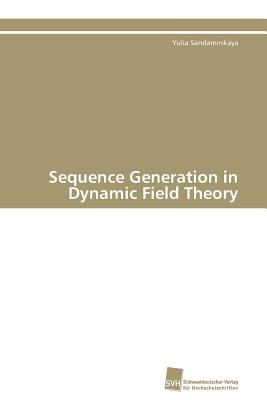
- We will send in 10–14 business days.
- Author: Sandamirskaya Yulia
- Publisher: Sudwestdeutscher Verlag Fur Hochschulschriften AG
- Year: 2011
- Pages: 148
- ISBN-10: 3838124723
- ISBN-13: 9783838124728
- Format: 15.2 x 22.9 x 0.9 cm, softcover
- Language: English
- SAVE -10% with code: EXTRA
Reviews
Description
A neural dynamics that controls behavior of an embodied agent has to be coupled through sensory-motor systems to a real-world environment. Thus, temporal continuity and gradedness of the dynamics of the perceptual, motor, and cognitive processes is to be considered. In the face of the inherent variability of these processes, stability is a necessary property of the behaviorally relevant neural states. But stability is in conflict with sequentiality, because transitions from one action to the next one require that a neural state decays and gives way to the next relevant neural state. In my doctoral thesis, I propose a mechanism that solves the problem of the stability vs. sequentiality trade-off in a model based on Dynamic Neural Fields. Robotic implementations of the model demonstrate how sequences of actions may be acquired from sensory input and then produced in an unknown environment. The sequence generation model may also be used to increase autonomy of neural-dynamic cognitive architectures. Overall, this work presents first steps towards elaboration of a neural-dynamic architecture that controls autonomous behavior of an embodied agent.
EXTRA 10 % discount with code: EXTRA
The promotion ends in 20d.02:51:55
The discount code is valid when purchasing from 10 €. Discounts do not stack.
- Author: Sandamirskaya Yulia
- Publisher: Sudwestdeutscher Verlag Fur Hochschulschriften AG
- Year: 2011
- Pages: 148
- ISBN-10: 3838124723
- ISBN-13: 9783838124728
- Format: 15.2 x 22.9 x 0.9 cm, softcover
- Language: English English
A neural dynamics that controls behavior of an embodied agent has to be coupled through sensory-motor systems to a real-world environment. Thus, temporal continuity and gradedness of the dynamics of the perceptual, motor, and cognitive processes is to be considered. In the face of the inherent variability of these processes, stability is a necessary property of the behaviorally relevant neural states. But stability is in conflict with sequentiality, because transitions from one action to the next one require that a neural state decays and gives way to the next relevant neural state. In my doctoral thesis, I propose a mechanism that solves the problem of the stability vs. sequentiality trade-off in a model based on Dynamic Neural Fields. Robotic implementations of the model demonstrate how sequences of actions may be acquired from sensory input and then produced in an unknown environment. The sequence generation model may also be used to increase autonomy of neural-dynamic cognitive architectures. Overall, this work presents first steps towards elaboration of a neural-dynamic architecture that controls autonomous behavior of an embodied agent.


Reviews